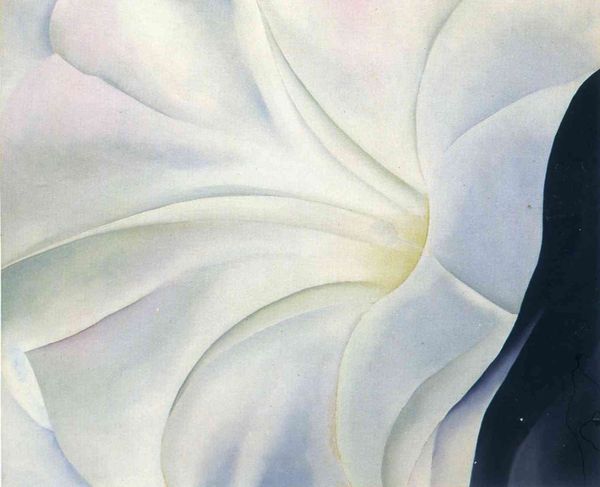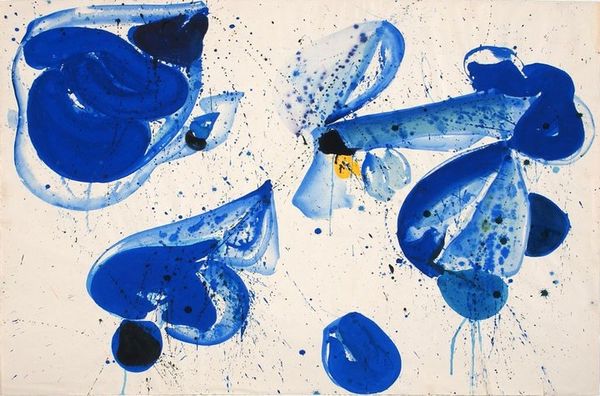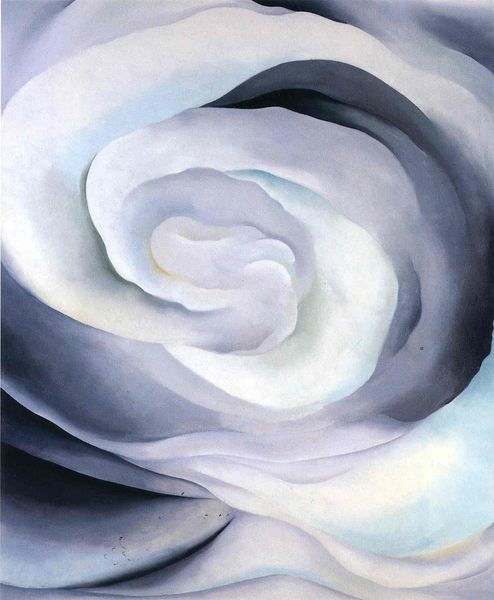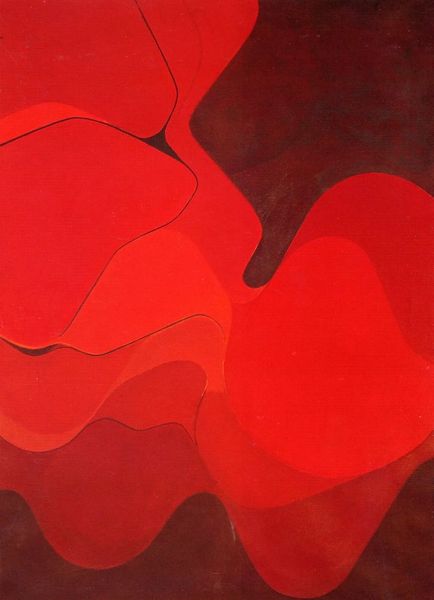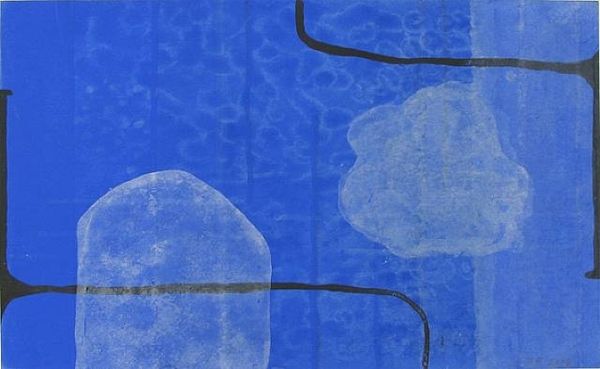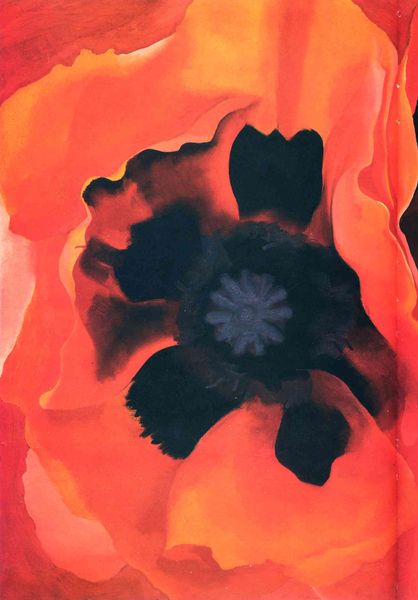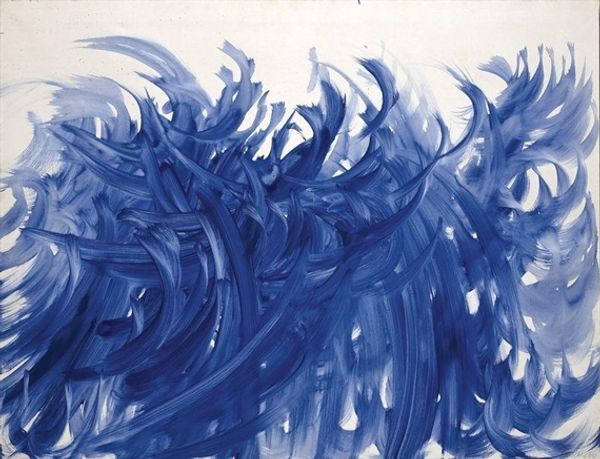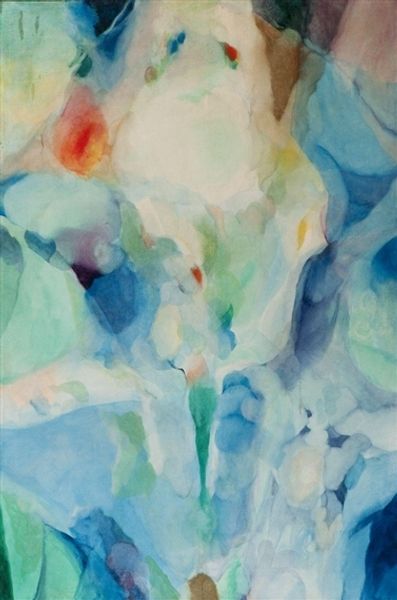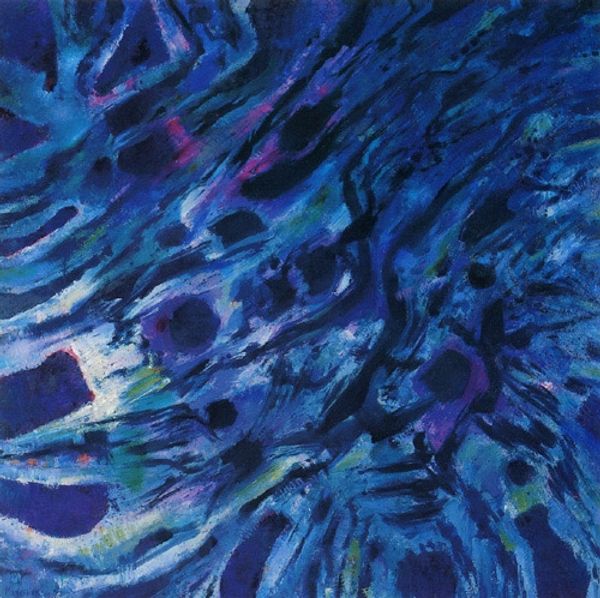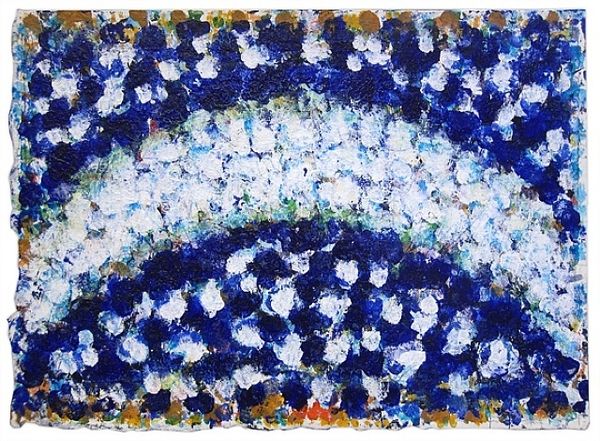
acrylic-paint
#
acrylic
#
negative space
#
bright focal point
#
acrylic-paint
#
form
#
white focal point
#
geometric-abstraction
#
abstract-art
#
water
#
line
#
abstract art
Copyright: Norman Lewis,Fair Use
Editor: Here we have Norman Lewis’s "Eye of the Storm (Seachange XV)," created in 1977 using acrylic paint. It strikes me as both calming and energetic, the way the bright, almost white, swirling shapes stand out against the deep blue background. What’s your interpretation of this piece? Curator: I see this as a powerful meditation on visibility and invisibility, a theme central to Lewis's career as a Black artist navigating the predominantly white art world. Consider the title "Eye of the Storm"; traditionally, the eye offers a moment of deceptive calm, yet Lewis paints it white, drawing our attention to a focal point, a center that, in its brightness, demands to be seen. Editor: Interesting, so the "storm" is not only a visual element but also a social commentary? Curator: Precisely! The 'Seachange' part of the title evokes fluidity, transition. In what ways was Lewis using abstraction as a way to address race and identity during that era? Think about how abstraction can provide both a shield and a megaphone. It disguises explicit representation, yet amplifies the emotional and visceral experience of navigating racial tensions. Editor: So, by not depicting recognizable figures, he avoids specific, easily dismissed narratives, but instead taps into deeper, shared feelings of displacement and resilience? Curator: Yes! It’s about using the visual language of abstraction to explore the complex interplay of identity, experience, and social forces. He subtly disrupts expectations by forcing us to look at the spaces *between* and around forms, encouraging us to actively question what's included, excluded, highlighted, or obscured. Editor: I never thought about abstraction as a form of activism, but now it makes perfect sense in the context of Lewis's experiences. Thank you! Curator: Absolutely. This piece becomes less about geometric shapes, and more about visual metaphors of historical and social undercurrents of his lifetime.
Comments
No comments
Be the first to comment and join the conversation on the ultimate creative platform.
